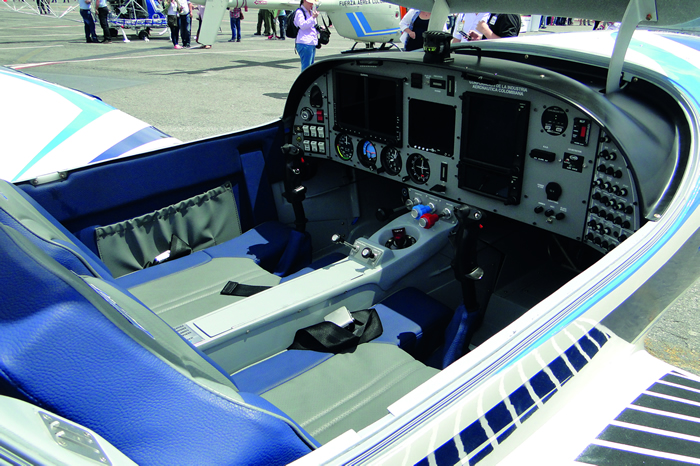Common Mistakes of a Lancair Pilot facing Adverse Weather Conditions
DOI:
https://doi.org/10.18667/cienciaypoderaereo.151Keywords:
Adverse Weather Conditions, Lancair, Pilots ErrosAbstract
This article discusses the origin of the main causes of accidents that occur in experimental Lancair aircrafts. By its nature, the experimental aircrafts exhibit unique flight conditions that could become difficult during inclement weather. For this study, we used the database of the National Transportation Safety Board (NTSB) in the United States, from January 2005 to December 2014, taking into account ten cases of fatal accidents involving planes from this brand. It was concluded that the disorientation and decision-making related to errors were the main reasons, which are directly associated with pilots skills at the time of the accident. Also, a thorough analysis of this research is recommended for a subsequent application to actual cases in the Colombian Air Force.
Downloads
References
Australian Transport Safety Bureau (ATSB). (2005). General aviation pilot behaviours in the face of adverse weather. Aviation research investigation report B2005/0127. Retrieved from http://www.flyvesikkerhed.dk/uploads/media/Pilot_behaviours_adv-1_01.pdf
Bowen, B., & Hansen, F. (2002). The human interface elements of system safety in the emerging small aircraft transportation system. Retrieved from http://www.faa.gov/about/initiatives/maintenance/hf/ibrary/documents/media/human_factors_maintenance/the_human_interface_elements_of_system_safety_in_the_emerging_small_aircraft_transportation_system.pdf
Federal Aviation Administration (FAA). (2010). Safety concerns of Lancair amateur-built experimental airplanes. Information for Operators INFO 10001, 2010. Retrieved from http://www.faa.gov/other_visit/aviation_industry/airline_operators/airline_safety/info/all_infos/media/2010/InFO10001.pdf
Hunter, D., Martinussen, M., & Wiggins, M. (2003). Understanding how pilots make weather-related decisions. The international journal of aviation psychology. 13(1), 73-87.
https://doi.org/10.1207/S15327108IJAP1301_5
Guevara, I. (2014). Colombia receives final T-90 Calima primary trainer. IHS Jane's Defence Weekly. Retrieved from http://www.janes.com/article/42361/colombia-receives-final-t-90-calima-primary-trainer
National Transport Safety Board (NSTB). (2010). Risk factors associated with weather-related general aviation accidents. Safety study. Retrieved from http://www.safetybok.org/ risk_factors_ associated_with_weather-related_general_aviation_accidents/
National Transport Safety Board (NSTB). (2012). The safety of experimental amateur-built aircraft. Retrieved from http://www.ntsb.gov/safety/safety-studies/ Documents/SS1201.pdf
Orasanu, J., & Martin, L. (1998). Errors in aviation decision making: a factor in accidents and incidents. Retrieved from http://www.pacdeff.com/pdfs/Errors%20in %20Decision %20Making.pdf
Wiegmann, D., & Shappell, S. (2001). A human error analysis of commercial aviation accidents using the human factors analysis and classification system (HFACS). Retrieved from http://www.faa.gov/data_research/research/med_humanfacs/oamtechreports/2000s/media/0103.pdf

Downloads
Published
Issue
Section
License
Assignment of Copyrights
Authors assign Ciencia y Poder Aéreo journal the exclusive rights (reproduction, distribution, public communication, and transformation) to exploit and commercialize their work, in whole or in part, in all the formats and modalities of present or future exploitation, in all languages, throughout the life of the work and throughout the world.
All contents published in Ciencia y Poder Aéreo journal are licensed under a Creative Commons Attribution 4.0 International License, whose complete information is available at http://creativecommons.org/licenses/by/4.0/
Under the terms of this license, users are free to download, print, extract, archive, distribute and publicly communicate the content of articles, provided that proper credit is granted to authors and Ciencia y Poder Aéreo, scientific journal of the Graduate School of the Colombian Air Force. Except when otherwise indicated, this site and its contents are licensed under a Creative Commons Attribution 4.0 International License.
For other uses not considered under this license it is required to contact the Director or the Editor of the journal at the e-mail address cienciaypoderaereo1@gmail.com.
The Graduate School of the Colombian Air Force and this publication are not responsible for the concepts expressed in the articles, including the metadata or the affiliation stated by authors. This is the full responsibility of the authors.





















